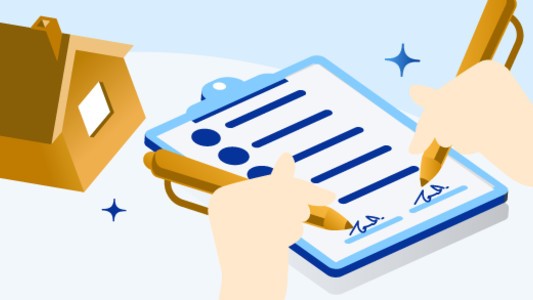Energy & Environment Guides: Making Ireland Green
If there were still doubts in the Republic about climate change, continuous uncommon weather in recent years would certainly have quieted these down. It’s no secret that the environment has been warning us for decades that climate change was forthcoming unless changes in our habits were made. See how a change in weather pattern can affect the isle and what is being done in Ireland to prevent it.
How Will Climate Change Affect Ireland?
According to the EPA (Environmental Protection Agency), changes in weather patterns will affect Ireland in the following fashion:
- Changes in wind speeds
- More chances of river flooding
- Increased coastal flooding
- Changes in plant distribution
- Shortage of drinking water supply
This past summer’s heat wave is already an indication of the stress a shortage of rainfall can place on crops and farming activities, in other words, our food supply!
The agency also clearly states that human activity is responsible for a 1-degree change in global temperatures and that if the tendency isn’t curbed rapidly, we will fail to reach the Paris Agreement Accord of keeping the temperature change to a maximum of 1.5 or 2 degrees Celsius. A limit marked as it indicates a point of no return with irreversible, permanent damage to the environment.
The other line of thought in slowing global warming is to allow nature (including ourselves) the necessary time to adapt to the changing environment.
Energy
Switch Energy Providers and Save On Your Energy Bills in 2026!
Rated ⭐⭐⭐⭐ on Trustpilot So You Know Selectra Customers Get Energy Advice You Can Trust!
Energy
Switch Energy Providers and Save On Your Energy Bills in 2026!
We're currently closed but please leave us your number and we'll give you a free call as soon as we're open!
What Is a Heatwave?
A heatwave is a short period of unusually warm weather, usually lasting from a single day to several weeks. Met Éireann defines an Irish heatwave further as a period of five days or more in which the average daytime temperature exceeds 25C.
Some Irish residents have certainly experienced this, with the temperature in Dublin’s Pheonix Park recording a whopping 33.1C, which was the hottest day in Ireland in 135 years, and almost broke the record set back in 1987 of 33.3C.
As a result of the Dublin temperature, and indeed the general temperature as a result of the heatwave Ireland has been having, a yellow alert has been put in place for much of Ireland. This level advises people to take preventative measures to combat the heat but does not classify the temperature as a direct danger to people.
What Causes a Heatwave?
A heatwave is caused when areas of high pressure occur in summer. In this year's case, the “Azores High” system which is usually situated in the Atlantic around northern Spain has temporarily shifted further north than usual, bringing with it the warmth that we have been experiencing recently.
Two terms that we are all familiar with are “global warming” and “climate change”. In short, harmful greenhouse gasses such as carbon dioxide and methane are emitted by activities such as burning fossil fuels, inefficient industrial practices, and the use of non-environmentally friendly materials. This traps heat within our atmosphere, leading to an increase in temperature, hence the terms of global warming and climate change.
This rate of creation and emission of these gasses has grown from the 1750s with the start of the industrial revolution. This has further accelerated at a drastic rate in the last 100 years in part due to the human population boom and deforestation, but also the development and utilization of more efficient, but harmful resources, such as plastics.
A combination of both the movement of a high-pressure system and global warming helped to great the recent heatwave Ireland has been enjoying.
What Warning Levels Are There?
Heatwave level warnings are broken up into three levels. These are:
- Yellow - Preventative action is advised. The weather is not yet classified as a danger.
- Orange - Preventative actions are strongly advised. Expect disruption to industries, transport, and general day-to-day activities.
- Red - Extreme disruptions are expected, and the weather poses a direct risk to health.
What Are Ireland’s Gas Emissions?
The global warming phenomenon comes from a significant increase in the burning of fossil fuels, or carbon dioxide, since the industrial revolution period (middle 18th century).
Here is Ireland’s progression in reducing its greenhouse gases in the past decades.
Source: Sustainable Energy Authority of Ireland
The chart indicates that, as a nation, since 2005 Ireland has managed to lower its annual gas emissions from 67,712 kilotons to 55,791 in 2020. This 18% reduction seems like great progress (and it is!), but we need to remember that we are trying to reach net-zero by 2050.
The SEAI (Sustainable Energy Authority of Ireland) divides carbon emissions into the following four categories:
Large Industry
This includes manufacturers such as cement factories, aviation companies, and large energy consumers.
Residential and small businesses
This is any carbon footprint from your home, private vehicles, and energy consumption from small businesses.
Agriculture Industry
Compared to other European countries, the methane released in Ireland from farm animals is significant.
Other
The remainder of gas emissions come from places such as landfills, or refrigeration needs for example.
Here is how each category contributed to Ireland’s gas emissions in 2020.
Source: SEAI CO2 Emmissions
What Is Ireland Doing About Climate Change?
Ireland has divided its response to climate change into two categories:
Mitigation
These are all the incentives and actions taken meant to change our behaviours. There have been tons of items introduced to entice us to curb our habits, examples are:
Adaptation
The Intergovernmental Panel on Climate Change (IPCC) describes this category as taking the necessary steps to protect ourselves, our homes, and our communities from likely forthcoming weather events. Examples of this in Ireland would be:
- The latest National Adaptation Framework (NAF)
- Land use policies (to protect water and agriculture needs)
- Improved Building Development Guidelines (to withstand severe winds, rainfall, etc.)
While both of these fields continue to morph and evolve as time progresses, Met Éireann, (Ireland’s Meteorological Service) continues to monitor weather patterns to give rough estimates as to what the future holds. This will help policymakers, farmers, and other institutions to take better action today to combat climate change tomorrow.
What Can I Do To Prevent Climate Change In Ireland?
There is little that can be done to prevent climate change now, however, there are tons of actions that individuals can take to reduce our gas emissions and help the country meet its carbon emission targets.
Here is our top 5 list of what everyday citizens can do to fight climate change in Ireland:
Use 100% Green Energy
In Ireland, six of the eleven energy providers boast electricity from 100% renewable energy sources like solar, wind, hydro, or biomass. Switching electricity and gas providers is easy and can even help lower your monthly energy bill according to the CRU.
Reduce, Reuse and Recycle
We have heard this phrase many times, but it's never been more true than nowadays. Plastic waste videos seem to go viral daily, everyone has their tips and tricks on how to reduce their energy use, and everyone is trying to find ways to make ends meet.
Buy Local From
It's hard to resist the latest super cheap gadget on Amazon, but you will be doing yourself and yours a huge favour by encouraging businesses in your local community. Not just in reducing transportation costs and emissions, but encouraging businesses who are doing their share for the planet as well.
Use Public Transport
There is no more visually evident impact than seeing fumes coming out of the back of a private car! Use public transport, a bicycle, or if you must have your own car, make the switch to a hybrid or electric vehicle (with a green provider of course!). Charging stations are easier and easier to find, making long journeys easy as pie.
Upgrade Your Home
No matter if you rent or own your home, there are tons of actions you can take to make your property more energy-efficient, consequently, reducing your carbon footprint. Actions such as:
If these ideas aren’t enough, feel free to browse through our environmentally-friendly guides below to see what other measures you can take.










